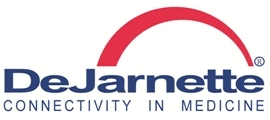From its inception, DeJarnette Research Systems, Inc. has been known for technical innovation.
AT/ANSIF and ImageShare 910
For the MDIS project, the US Military’s early push to develop a working Picture Archiving and Communication System (PACS) based on ACR-NEMA V2.0, DeJarnette developed and manufactured a high performance, robust, and widely used ACR-NEMA V2.0 interface board called AT/ANSIF and ImageShare 910, a Medical Network Gateway that allowed communication between modalities and the PACS devices built by the various partners. Learn more about our routing product, Intelligent Router a direct descendant of ImageShare 910.
AN/API
Before the DICOM standard was first released, DeJarnette developed AN/API, its ACR-NEMA and later its DICOM toolkit. The toolkit was written for OS/2, Sun Solaris, UNIX and Windows operating systems. It’s currently an integral part of XOE, providing DICOM primitives for Entegra+. Although our toolkit is still available for licensing, developing your applications around XOE is simpler and would be quicker to market. Contact us for distributor pricing of XOE.
LaserShare
In 1995, DeJarnette developed the first print spooler to support DICOM storage. Our LaserShare product became the standard of care in printing for the Veterans Administration.
ImageShare CR
In 1996, DeJarnette developed the first CR interface application to support both DICOM storage and DICOM modality worklist. Later, the success of ImageShare CR, our CR QC workstation, inspired vendors to include QC stations as integral parts of their CR products.
Migration Toolkit
DeJarnette performed its first ad-hoc data migration in 1999. In early 2002, DeJarnette thought the data migration market would take off as hospitals began to replace their legacy PACS deployments with the latest PACS offerings and take advantage of their enhanced features. We developed the first third party data migration toolkit later that year. We performed our first third party data migration with our new toolkit in 2003. Learn more about our latest migration toolkit that takes advantage of XOE.
dyseCT
In late 2003, DeJarnette began developing the first CT application that could break a CT study into its constituent orders with algorithms that looked into the pixel data itself. We released dyseCT in 2004. Its success inspired CT manufacturers to add software to their products that allowed CT technologists to tie images to their constituent orders as the exams were performed.
xDL
In 2006, DeJarnette began development of the first vendor-neutral archive application which we called xDL. It was first deployed in late 2007 as the third, but largest, regional archive in the province of Quebec. It supported 65% of the hospitals in Quebec and interfaced with storage from Hewlett Packard. Learn more about xDL, our vendor-neutral archive that supports XDS.
xDR
In late 2011, DeJarnette in partnership with CGI Canada began development of the first XDS-I gateway product which we called xDR. CGI deployed xDR at 14 sites supporting 22 hospitals in the greater Toronto area as part of an XDS-I compliant regional archive. Learn more about xDR and its capabilities.
